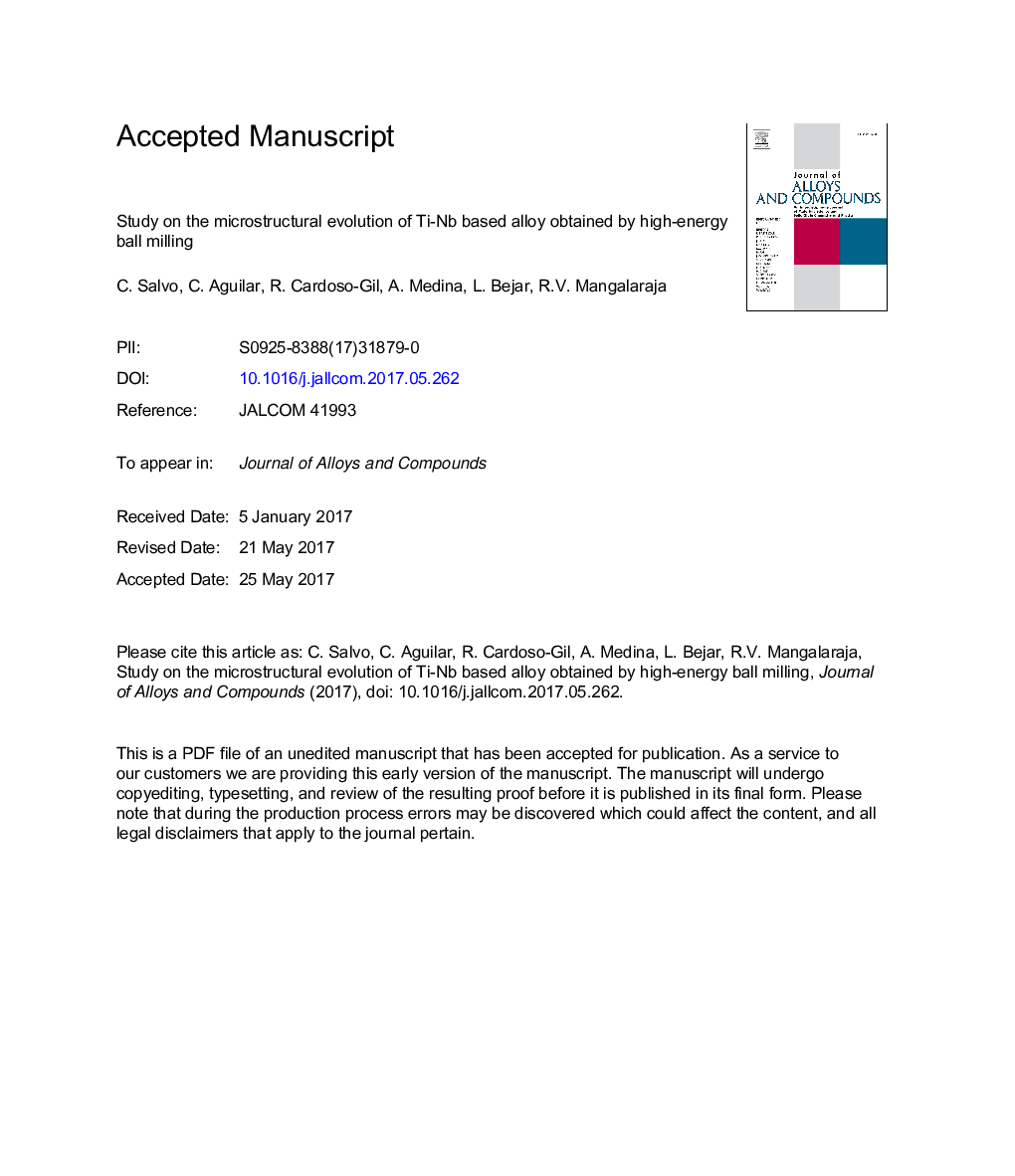| Article ID | Journal | Published Year | Pages | File Type |
|---|---|---|---|---|
| 5458449 | Journal of Alloys and Compounds | 2017 | 35 Pages |
Abstract
Titanium-based alloys are widely used in biomedical applications because of their good properties such as fatigue resistance, workability, corrosion resistance and biocompatibility. The effect of milling time on the deformation-driven alloying mechanisms in the system Ti-30Nb-13Ta-2Mn (wt.%) during mechanical alloying (MA) has been studied by scanning electron microscopy (SEM), X-ray diffraction (XRD) and high-resolution transmission electron microscopy (HRTEM). High-energy milling was performed in controlled atmosphere of argon at different times (1, 5, 10, 20, 30, 50, 70, 90 and 110 h), using agate as grinding media. The XRD-patterns showed the formation of Ti-β solid solution occurred above 20 h of milling. Due to the high energy of this process, the formation of Ti-β and Nb-fcc crystalline phases embedded in an amorphous phase was promoted. The longer alloying time above 50 h resulted in spherical morphology and texturing of the synthetized alloy which were evidenced from the SEM and XRD analyses, respectively. Lattice parameters, mean crystallite size and microstrain (root mean square, rms) were obtained from Rietveld analysis using MAUD software. The nanocrystalline domains were also quantified by TEM, which showed the coexistence of amorphous and nanocrystalline particles of Mn2Ti, MnTi, NbTi4, Nb-fcc and Ti-β embedded in an amorphous phase.
Related Topics
Physical Sciences and Engineering
Materials Science
Metals and Alloys
Authors
C. Salvo, C. Aguilar, R. Cardoso-Gil, A. Medina, L. Bejar, R.V. Mangalaraja,
